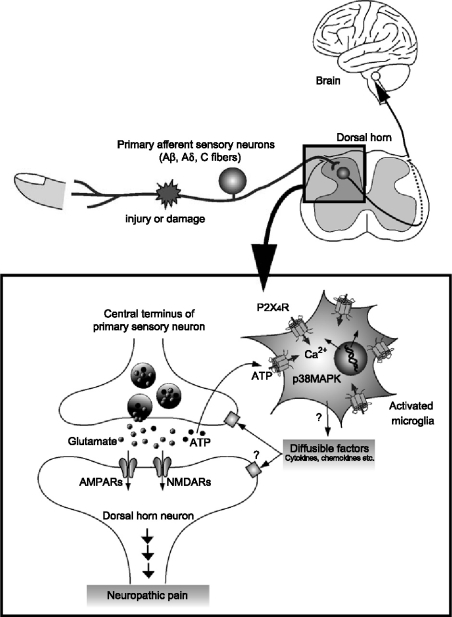Figure 1.
Schematic illustration of possible mechanisms by which P2X4R in activated microglia modulate pain signaling in the dorsal horn. Peripheral nerve injury leads to molecular and cellular alterations in the spinal dorsal horn after nerve injury. Activated microglia after nerve injury increase the expression of P2X4R. The P2X4R are activated by ATP which is presumably released from primary sensory neurons (or astrocytes), and in turn cause a rise in the intracellular calcium and activate p38MAPK. These signals lead to the release of bioactive diffusible factors such as cytokines and chemokines. The diffusible messengers released from microglia may then interact with excitatory and inhibitory synapses of neighboring dorsal horn neurons and enhance the excitability in dorsal horn neurons, which in turn leads to increased transmission in pain signaling neurons. The enhanced transmission in the dorsal horn pain network might be due to the facilitation of glutamatergic synaptic transmission or the suppression of GABA/glycinergic inhibition.

